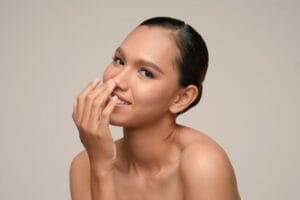Ethnic Rhinoplasty: Preserving Your Heritage While Enhancing Your Profile
Sarah walked into my consultation room with a folder full of before-and-after photos. She’d been researching rhinoplasty for months, but something felt off about the results she was seeing online. “They all look the same,” she said, frustration evident in her voice. “I want my nose to look better, but I still want to look like me.” That’s when we started talking about ethnic rhinoplasty—a specialized approach that respects your unique facial features while achieving the aesthetic goals you’re after.
Ethnic rhinoplasty represents a significant shift in cosmetic surgery philosophy. It’s not about creating a “one-size-fits-all” nose that erases cultural identity. Instead, it’s about understanding the nuanced differences in nasal anatomy across different ethnic backgrounds and working with those features—not against them. This approach has become increasingly important as more patients seek procedures that honor their heritage while still addressing functional or aesthetic concerns.
Quick Answer: Ethnic rhinoplasty is a specialized form of nose surgery tailored to patients of African, Asian, Middle Eastern, Hispanic, and other non-Caucasian backgrounds. It focuses on preserving cultural identity and ethnic characteristics while enhancing nasal harmony. The procedure addresses unique anatomical differences like thicker skin, wider nasal bases, lower bridge height, and different cartilage structures that vary across ethnicities. Surgeons use specialized techniques to maintain ethnic features while achieving natural-looking improvements.
Here’s what makes this different from traditional rhinoplasty approaches. Most conventional techniques were developed primarily for Caucasian patients—those with thinner skin, higher nasal bridges, and narrower bases. But facial anatomy varies significantly across different ethnic groups, and applying those same techniques universally often leads to results that look unnatural or erode the patient’s ethnic identity.
Understanding Ethnic Rhinoplasty: Beyond the Basics
Before diving into the technical aspects, let’s clarify what ethnic rhinoplasty actually means. The term itself has evolved over the years, and some surgeons prefer different terminology—like “cultural rhinoplasty” or “ethnic-specific rhinoplasty.” But the core concept remains the same: it’s about respecting and working with the natural features that define your ethnic background.
Common Anatomical Differences Across Ethnicities
Here’s where things get interesting. The nasal anatomy varies more than most people realize. African American patients, for instance, often have thicker skin, wider nostrils, and a lower nasal bridge. Asian patients typically have a wider, flatter nose with less projection and thicker skin. Middle Eastern and Mediterranean patients often have a prominent nasal hump, thicker skin, and a drooping tip. Hispanic patients may have a combination of features depending on their specific heritage.
These differences aren’t just cosmetic—they affect how the surgery needs to be performed. Thicker skin, for example, requires different suturing techniques. A lower bridge might need augmentation rather than reduction. Wider nostrils might need alar base reduction, but done carefully to avoid looking pinched. The cartilage structure varies too, which affects how the nose holds its shape post-surgery.
In my practice, I’ve observed that patients seeking ethnic rhinoplasty often have specific concerns. Some want to reduce a prominent hump while keeping their distinctive profile. Others want to refine the tip without losing the width that’s characteristic of their ethnic background. Many simply want better breathing—functional improvement that doesn’t erase their cultural identity.
Why Ethnic Rhinoplasty Matters
This isn’t just about aesthetics. There’s a deeper psychological component here. When patients see results that erase their ethnic features, it can create a disconnect—they look in the mirror and don’t recognize themselves. That’s not what cosmetic surgery should achieve. The goal should be enhancement, not transformation into someone else.
Meanwhile, the field has been shifting. Clinicians report that patients are increasingly educated about their options. They’re asking better questions. They’re bringing in photos not just of other patients, but of family members—saying “I want to look like a better version of my sister” rather than “I want to look like this celebrity.” This represents a healthy evolution in how we approach cosmetic surgery.
Key Techniques in Ethnic Rhinoplasty
The techniques used in ethnic rhinoplasty differ significantly from traditional approaches. That’s not to say one is better than the other—they’re just designed for different anatomical starting points. Let me break down some of the most important techniques.
Bridge Augmentation
Many ethnic rhinoplasty patients need bridge augmentation rather than reduction. This is particularly common in Asian and African American patients who have naturally lower nasal bridges. Instead of shaving down bone and cartilage, surgeons add material to build up the bridge. This can be done using cartilage grafts (often taken from the patient’s own septum or ear), synthetic implants, or sometimes a combination of both.
The choice between autologous grafts (your own tissue) and implants is nuanced. Autologous grafts have a lower risk of rejection and complications, but they can be reabsorbed over time. Implants provide more predictable results, but there’s a small risk of infection or extrusion. Most experienced surgeons prefer autologous grafts when possible, though implants may be necessary in certain cases.
Tip Refinement
Tip refinement in ethnic rhinoplasty requires a delicate touch. The goal is to create definition without making the tip look pinched or unnatural. This often involves cartilage sculpting and strategic suturing techniques. The thicker skin common in many ethnic patients means that subtle changes to the underlying structure translate to subtle visible changes—which is actually good for natural-looking results.
That said, there’s an art to this. Too aggressive, and you lose the natural ethnic character. Too conservative, and patients don’t see the improvement they’re hoping for. It’s about finding that balance—what I call the “sweet spot” where enhancement meets preservation.
Alar Base Reduction
Wider nostrils are common in many ethnic groups, and some patients want to reduce this width. Alar base reduction involves removing small wedges of tissue from the base of the nostrils. But here’s the catch: this needs to be done very carefully. Remove too much, and the nostrils look pinched. Remove too little, and patients don’t see the change they wanted.
The key is symmetry and proportion. The nostrils should be in harmony with the rest of the face—not too wide, not too narrow. And importantly, the reduction should preserve the natural flare that’s characteristic of the patient’s ethnic background. This is where experience really matters.
Cartilage Grafting
Cartilage grafting is particularly important in ethnic rhinoplasty because many patients need structural support added rather than removed. The cartilage can come from the patient’s own septum, ear, or occasionally rib. Each source has advantages and limitations. Septal cartilage is ideal when available—it’s strong and straight. Ear cartilage is more flexible, good for tip work. Rib cartilage provides the most volume but requires a more involved procedure.
Clinicians report that successful ethnic rhinoplasty often requires more extensive grafting than traditional rhinoplasty. This is because we’re building up structure rather than reducing it. The grafts need to be placed precisely and secured properly to ensure they maintain their position as healing occurs.
Choosing the Right Surgeon for Your Ethnic Rhinoplasty
This might be the most important section of this guide. Not all plastic surgeons are experienced with ethnic rhinoplasty. The techniques are different, the anatomy is different, and the aesthetic goals are different. Choosing a surgeon who doesn’t specialize in this area can lead to disappointing results—or worse, results that erase your ethnic features entirely.
What to Look For
Experience matters, but it’s not just about years in practice. You want a surgeon who has specific experience with patients of your ethnic background. Ask to see before-and-after photos of patients who share similar features. Look for results that look natural and preserve ethnic characteristics. If all the “after” photos look like they could be the same person, that’s a red flag.
Board certification is essential—look for certification from the American Board of Plastic Surgery or the American Board of Facial Plastic and Reconstructive Surgery. But beyond that, ask about their training. Have they done additional fellowships in ethnic rhinoplasty? Do they attend conferences or continuing education focused on this specialty?
During your consultation, pay attention to how the surgeon talks about your features. Do they appreciate your ethnic characteristics, or do they immediately start talking about “fixing” things? A good surgeon should talk about enhancement and harmony, not transformation into someone else.
Ethnic Rhinoplasty: Questions to Ask
Come prepared with specific questions. Here are some that often reveal whether a surgeon is right for ethnic rhinoplasty:
- How many patients of my ethnic background have you operated on?
- Can I see before-and-after photos of patients with similar features?
- How do you preserve ethnic characteristics during surgery?
- What techniques do you use that are specific to ethnic rhinoplasty?
- Have you had any complications with ethnic rhinoplasty patients, and how did you handle them?
- What’s your approach to bridge augmentation (or whatever specific concern you have)?
Also, ask about revisions. Ethnic rhinoplasty can be more complex, and revisions are sometimes necessary. A surgeon who’s honest about this—and has experience with revisions—is more trustworthy than one who promises perfection every time.
The Consultation Process: What to Expect
Your consultation should be thorough—typically 60-90 minutes. The surgeon should examine your nose both externally and internally (using a small scope). They’ll discuss your goals, assess your anatomy, and explain what’s realistic. This is also when you’ll discuss computer imaging, if the surgeon offers it.
Ethnic Rhinoplasty: Computer Imaging
Many surgeons use computer imaging to show potential results. This can be helpful, but it’s important to understand its limitations. The images are a guide, not a guarantee. In ethnic rhinoplasty especially, the thicker skin and different healing patterns mean the final result might differ from the simulation. Still, it’s useful for ensuring you and your surgeon are on the same page about goals.
That said, be wary of surgeons who promise results that look exactly like the computer image. Healing is unpredictable, and individual anatomy varies. A good surgeon will show you a range of likely outcomes, not just one perfect simulation.
Ethnic Rhinoplasty: Setting Realistic Expectations
This is crucial. Ethnic rhinoplasty can achieve remarkable improvements, but it’s not magic. Your surgeon should be honest about what’s possible given your specific anatomy. They should also explain potential limitations—for instance, how much bridge augmentation is safe, or how much tip refinement is possible without compromising structure.
Most patients I work with have a combination of concerns. They might want to reduce a hump, refine the tip, narrow the nostrils, and improve breathing—all while maintaining their ethnic identity. The surgeon needs to prioritize these goals and explain which are most important to address in a single procedure.
Recovery and Healing After Ethnic Rhinoplasty
Recovery from ethnic rhinoplasty follows a similar timeline to traditional rhinoplasty, but there are some differences worth noting. The thicker skin common in many ethnic patients can mean swelling takes longer to resolve. This isn’t necessarily a problem—it’s just something to be aware of.
Ethnic Rhinoplasty: The First Week
You’ll have a splint on your nose, and you’ll likely have some packing inside your nostrils (though not always). Swelling and bruising peak around days 2-3, then gradually improve. Most patients can return to light activities within a week, though strenuous exercise should wait.
Pain is usually manageable with prescription medication for the first few days, then over-the-counter pain relievers. The discomfort is often more about congestion than actual pain. Sleeping with your head elevated helps reduce swelling.
Weeks 2-4
The splint comes off after about a week. Your nose will look swollen and possibly wider than you expected—this is normal. Don’t panic. The swelling will continue to decrease over the coming weeks and months. Most patients can return to work after 10-14 days, though some prefer to wait longer.
You’ll need to avoid activities that could injure your nose. No contact sports, no glasses resting on the bridge (tape them to your forehead if needed), and be careful with activities that increase blood pressure, which can worsen swelling.
Ethnic Rhinoplasty: Months 2-6
This is when you’ll see significant improvement. The swelling continues to decrease, and the nose starts to take its final shape. But here’s what many patients don’t realize: the nose continues to refine for up to a year, sometimes longer. In ethnic rhinoplasty especially, the thicker skin means the final definition might not be visible until 12-18 months post-surgery.
Be patient. It’s frustrating to wait, but the results are worth it. The nose you see at 3 months is not the nose you’ll have at 12 months. This is particularly important for patients who’ve had bridge augmentation or significant tip work.
Ethnic Rhinoplasty: Potential Risks and Complications
Like any surgery, ethnic rhinoplasty carries risks. These are generally rare, but it’s important to be informed. The most common complications include bleeding, infection, and adverse reactions to anesthesia. More specific to rhinoplasty are issues like asymmetry, breathing problems, and need for revision.
In ethnic rhinoplasty, there are some unique considerations. Graft resorption can be an issue with autologous cartilage—though this is usually minimal. Implants carry a small risk of infection or extrusion, particularly if they’re placed in areas with thin tissue coverage. The thicker skin in many ethnic patients actually provides some protection against visible implant edges, which is an advantage.
Breathing problems can occur if the surgery narrows the nostrils too much or if internal structures are damaged. This is why it’s crucial to work with a surgeon who understands both the aesthetic and functional aspects of the nose.
Revision rates vary, but they’re generally higher in ethnic rhinoplasty than traditional rhinoplasty. This isn’t necessarily a sign of poor technique—it’s often because the procedures are more complex, and sometimes patients want further refinement. The key is choosing a surgeon experienced in both primary and revision ethnic rhinoplasty.
Ethnic Rhinoplasty: Cost Considerations
Ethnic rhinoplasty typically costs between $8,000 and $15,000, though prices vary widely based on location, surgeon experience, and procedure complexity. More complex cases requiring extensive grafting or revision surgery can cost more. Insurance usually doesn’t cover purely cosmetic procedures, though if you have functional issues (like breathing problems), some portion might be covered.
Don’t choose a surgeon based solely on price. This is your face we’re talking about—it’s worth investing in the right surgeon. That said, many practices offer financing options to make the procedure more accessible.
Real Patient Stories: What to Expect
I’ve worked with hundreds of ethnic rhinoplasty patients over the years, and their stories illustrate the diversity of goals and outcomes. Maria, a 28-year-old Hispanic patient, wanted to reduce a prominent hump while maintaining her distinctive profile. We achieved this through careful dorsal reduction and tip refinement. At her one-year follow-up, she said, “I look like me, just better. People notice I look different, but they can’t pinpoint what changed.”
Then there’s James, a 32-year-old African American patient who wanted bridge augmentation and tip refinement. His thicker skin meant the final definition took over a year to show, but the results were worth the wait. He told me, “I was worried I’d look like I was trying to be someone else. But this is still my face, just refined.”
These stories highlight what ethnic rhinoplasty should achieve: enhancement that respects identity. It’s not about erasing who you are—it’s about becoming the best version of yourself.
The Future of Ethnic Rhinoplasty
The field continues to evolve. New techniques are being developed, and surgeons are gaining more experience with diverse patient populations. There’s also growing recognition that “ethnic” isn’t a monolithic category—there’s as much variation within ethnic groups as between them.
Meanwhile, patients are becoming more educated. They’re asking better questions, bringing in more specific goals, and seeking surgeons who understand their unique needs. This is driving improvements in technique and outcomes.
Research is also expanding. Studies are looking at long-term outcomes, comparing different grafting materials, and refining techniques for specific ethnic groups. This evidence-based approach will continue to improve results for future patients.
Making the Decision: Is Ethnic Rhinoplasty Right for You?
Deciding to have rhinoplasty is personal. It’s a decision that should be made for yourself, not because of pressure from others. If you’re considering ethnic rhinoplasty, ask yourself: What specifically bothers you about your nose? What would you like to change? What would you like to preserve?
Be honest about your motivations. Are you doing this because you genuinely want to improve your appearance, or are you responding to external pressure? Cosmetic surgery should be about your own satisfaction, not meeting someone else’s standards.
Also, consider timing. Are you in a stable place in your life? Can you take time off for recovery? Do you have realistic expectations? These factors matter as much as the technical aspects of the surgery.
If you decide to proceed, take your time choosing a surgeon. Have consultations with multiple surgeons. Ask questions. Look at before-and-after photos. Trust your instincts—if something feels off, it probably is. The right surgeon will make you feel heard, respected, and confident about the process.
Moving Forward: Your Next Steps
If you’re considering ethnic rhinoplasty, start by researching surgeons in your area who specialize in this procedure. Look for board certification, experience with your ethnic background, and positive patient reviews. Schedule consultations with at least two or three surgeons to compare approaches and get a sense of who you’re comfortable with.
During consultations, bring photos of noses you like (and don’t like) to help communicate your goals. Be specific about what you want to change and what you want to preserve. Ask about the surgeon’s experience, techniques, and realistic expectations for your case.
Remember, this is a significant decision. Take your time. Do your research. Choose the right surgeon. And most importantly, make sure you’re doing this for yourself, not to meet someone else’s expectations. Ethnic rhinoplasty can be a wonderful way to enhance your appearance while honoring your heritage—but only if it’s done thoughtfully, by the right surgeon, for the right reasons.
Your nose is part of what makes you unique. The goal of ethnic rhinoplasty isn’t to erase that uniqueness—it’s to enhance it. With the right approach and the right surgeon, you can achieve results that make you feel more confident while still looking unmistakably like yourself.














Post Comment